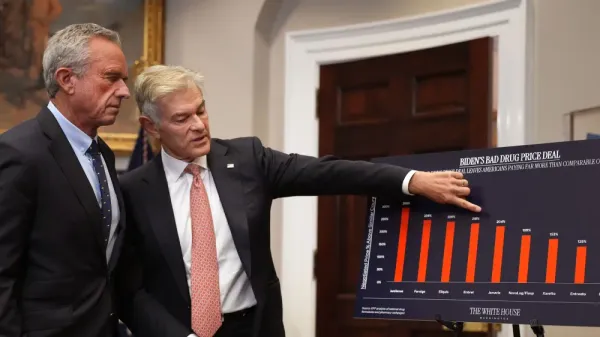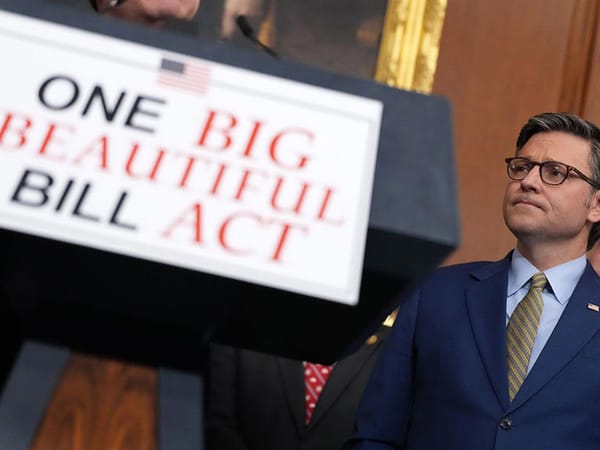Sticker Shock Therapy: Trump’s New Plan to Slash Drug Prices

Executive Summary
On May 12, 2025, President Donald J. Trump signed Executive Order 14297, directing federal agencies to implement a “Most Favored Nation” (MFN) pricing model for prescription drugs. The policy mandates that the U.S. not pay more than the lowest price paid by peer nations for certain medications. It also calls for increased price transparency and regulatory action if pharmaceutical manufacturers do not voluntarily reduce prices within 30 days. A six-month review period will follow.
This move targets two central themes:
- Lowering domestic drug prices
- Ending what the administration terms “foreign free-riding” on U.S. innovation
The proposal has been met with cautious optimism from employers, skepticism from pharmaceutical groups, and near-certain legal challenges.
Potential Employee Benefit Impact
If implemented, the MFN model may impact employer-sponsored health plans in the following ways:
- Reduced specialty drug and brand-name medication costs over time
- Improved stop-loss performance through lower high-claimant exposure
- Enhanced transparency and leverage in PBM contract negotiations
- Acceleration of biosimilar and lower-cost therapeutic substitution strategies
However, cost savings will depend on the policy’s scope, court viability, and actual behavior of pharmaceutical manufacturers and PBMs.
Strategic Logic (On Paper, Anyway)
The U.S. consistently pays 2–4x more for prescription drugs than peer nations. The MFN model introduces global reference pricing, already employed in countries like Germany and the U.K., and aims to bring the U.S. in line.
Supporters argue it corrects market failure in monopolistic drug classes—particularly those with little competition or generic availability. In pilot testing, CMS estimated significant savings from MFN-style pricing models, especially for Medicare Part B drugs.
The executive order may:
- Deliver savings similar to the Inflation Reduction Act’s price negotiations
- Strengthen employer position in PBM contracting
- Encourage value-based purchasing and outcomes-based drug contracts
From a broader perspective, realigning drug costs could free up corporate healthcare budgets for other workforce investments, improving competitiveness and benefit sustainability.
What Happens After the Cameras Leave
Critics argue that MFN pricing could undermine pharmaceutical R&D by shrinking global profit margins, especially from the U.S. market that funds a disproportionate share of innovation. The Congressional Budget Office estimates that similar proposals could result in 8–15 fewer new drugs over a decade.
There are practical concerns as well:
- Manufacturers may withhold products or delay launches in the U.S., as seen when similar price control policies were tested abroad
- Legal precedent is not favorable: a 2020 MFN rule by CMS was struck down in federal court due to procedural violations
- PBMs could respond by raising administrative fees or shifting costs elsewhere, as noted in industry reactions
The pharmaceutical lobby—historically one of the most powerful in Washington—is expected to challenge implementation at every step, slowing or weakening the policy’s effect.
The Part Where We Get Candid
This is the healthcare equivalent of showing up at a Michelin-star restaurant with a Groupon and expecting the chef to thank you for the exposure. Sure, it might get you in the door—but don’t be surprised if your steak’s smaller and the truffle oil smells like Costco.
The Executive Order aims high: equalize drug costs globally, slash U.S. employer burden, and make pharma play fair. Whether it works depends less on politics and more on execution—and whether pharma finds loopholes faster than HHS can write the rules.
For now, employers should keep one eye on Washington and the other on their PBM contract.
But for CFOs and HR leaders, the message is clear: the era of passive pharmacy benefit management is over. Even if this Executive Order gets stalled or softened, it’s part of a larger trajectory—one that points toward lower price tolerance, increased transparency, and rising demand for ROI across every layer of the healthcare system.
Need help evaluating how this policy direction could affect your plan? Let’s talk.



